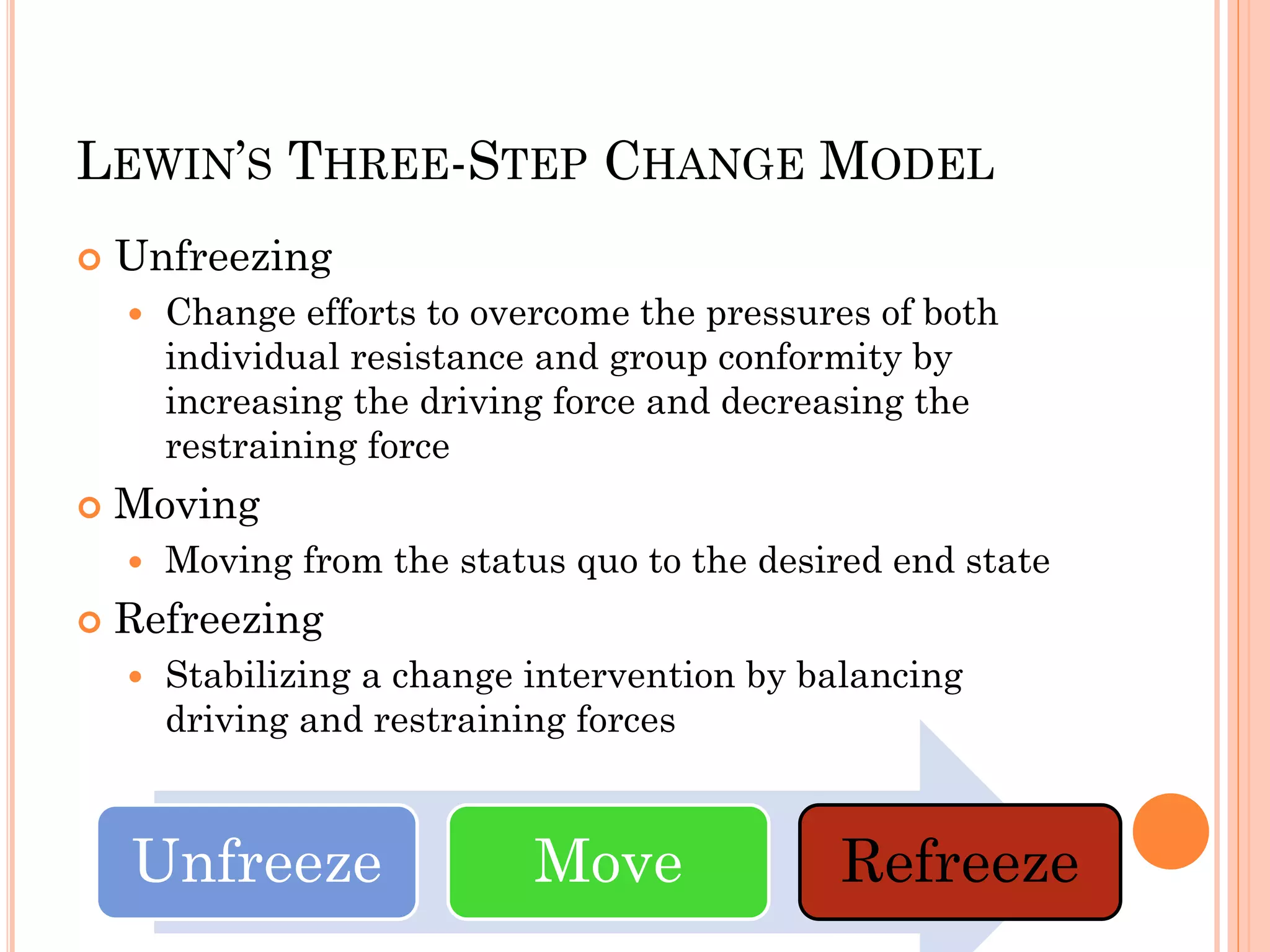The document discusses the nature and forces of organizational change. It states that change is vital to avoid stagnation, is a constant process, and is increasing in speed. Resistance to change stems from individual fears and uncertainties as well as threats to organizational structures and power dynamics. Effective change management involves open communication, participation in the process, and addressing the underlying sources of resistance. Models like Lewin's three-step model and Kotter's eight steps provide frameworks for guiding change initiatives.

















